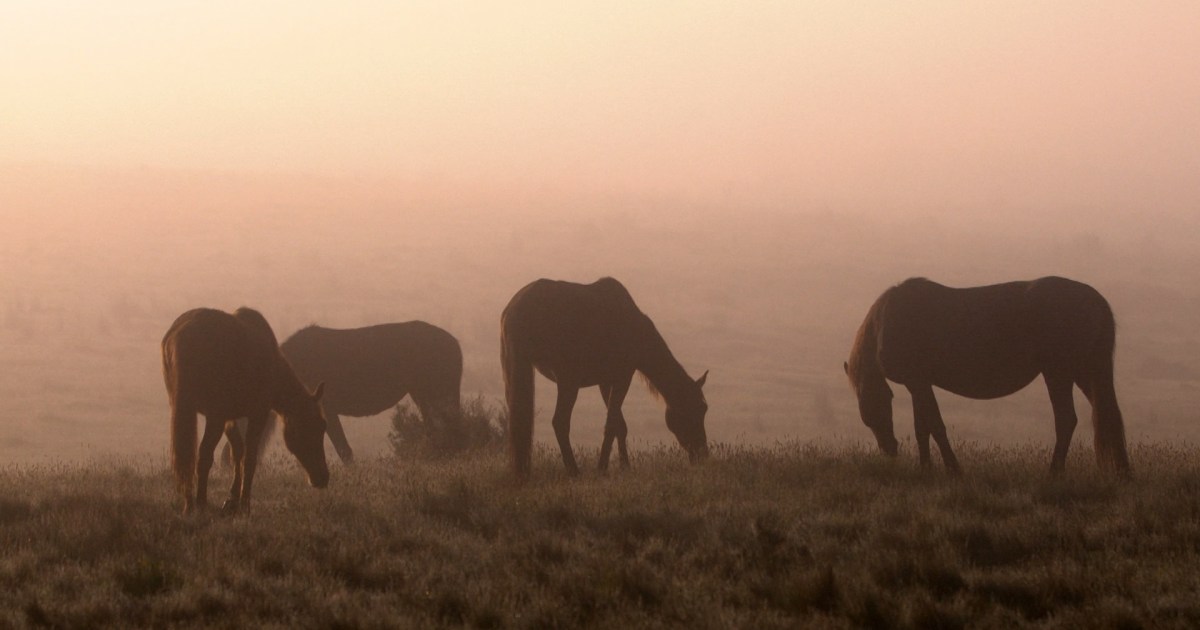A tall Christmas tree in a post-Christian world | Religion
Among the annual rituals in New York around this time of the year is for the whole family to make an outing to see the Christmas Tree at the Rockefeller Center. The only issue is that getting anywhere near the iconic tree is a Herculean task.
From the time that it is ritually lit in early December – this year it was on Wednesday, December 1 – to Christmas Day the site of the tree is flooded with native New Yorkers and tourists alike, making it difficult if not impossible to get close to the tree itself.
The locals soon discover that tourists find their way to the tree using their Google Maps app and thus almost always enter the site from Fifth Avenue, and as a result that entrance is prohibitively crowded. So, those locals who know the area better go through side and adjacent streets to get an even better angle on the glorious tree, and take their annual picture with their family and friends in front of it to send to those who are far away.
What is this bizarre ritual (aren’t all rituals bizarre and yet magical?) and what does it mean? On the surface the Christmas tree is a symbol of the Christian character of this city and this country. But is it?
The White House too has its own so-called “National Christmas Tree” that was lit on December 2 this year. But in New York City, the tree has assumed a set of different meanings – and no one is in charge of legislating what the tree means. What exactly are those meanings?
Have we all – Jews, Muslims, Hindus, atheists, agnostics, shamans etc – become Christianised or has the Christmas tree itself assumed a whole different set of meanings? Solid as it stands with all its glittering light bulbs, the tree has become a floating signifier.
The tree reminds me – one among billions of non-Christians – of my late mother, a devout Shia Muslim, going to the mausoleum of the Shia saint Ali ibn Mahziar Ahvazi in our hometown. At the mausoleum’s courtyard, there was a magnificent tree on which local worshippers hung their “dakhil”. A dakhil is a piece of cloth people hang on tree branches to wish for a dream to come true – a suitable boy for their daughter, a faithful bride for their son, success in their spouse’s business, cure for the illness of a relative, pregnancy for a young cousin … The lightbulbs and Christmas decoration items on the Rockefeller Center tree always remind me of those dakhils.
We all look at the same tree, but see different things.
Post-secular or post-Christian?
The origin of this current tree at the epicentre of Christmas holiday celebrations is probably Roman Saturnalia – or an even older pagan tradition – which was eventually Christianised in Europe. German immigrants are believed to have introduced the symbolic item to the US (earlier ascetic Christians were vehemently opposed to the idea). For immigrant Christians, the tree was a relic of their old homelands they replanted in their adopted country. The tree eventually became coterminous with the figure of Christ himself.
Today, people continue to see in that tree aspects of their own memorial biographies, sites of their own forgone or foreclosed pieties. These symbols that originally began as entirely pre-Christian pagan icons have now in fact become a post-Christian iconography of civic rituals – an aspect of what the prominent American sociologist Robert Bellah called “civil religion”.
Today millions of New Yorkers and tourists visit this tree without any particular attention or care to its Christian symbolism and dance on the ice rink around it as if they are participating in a pagan ritual entirely outside the purview of any institutional religious symbolism.
How we read the Christmas tree today cannot be separated from the fate of Christianity itself in both a secular or post-secular world.
In his brilliant meditative text, After Christianity (2002) eminent Italian philosopher Gianni Vattimo argues how through the decidedly post-Christian philosophies of Friedrich Nietzsche and Martin Heidegger, he, in fact, has rediscovered his Christianity for a new millennium. But is that a Christianity for a so-called post-secular age, or is it a secular philosophy for a post-Christian world? Vattimo seems to think that secularisation is itself a subterfuge for or the fulfilment of Christianity. But that supposition itself is a bit too Christian eschatological to Jewish or Muslim ears – where the very idea of “secularism” is an entirely alien proposition.
Tall trees East and West
If we abandon the anxieties of both Christianity and its secular guises, entirely independent of any particular religion laying any total claim on them, trees have the magic, the grace and the power of their own.
Take the Abarkuh Cypress in Iran – so called because it is located in Abarkuh in the Yazd province of Iran. The cypress is believed to be 4,000 to 5,000 years old, the second oldest tree after the Methuselah tree in California. The legend has it that Zoroaster had planted it – and the tree is as a result sometimes referred to as the Zoroastrian cypress.
There is a vague operatic allusion to this legend in the beautiful “Ombra mai fu”, also known as “Largo from Xerxes”, the opening aria from George Frideric Handel’s opera Serse (1738), where the mighty Xerxes I sings to his favourite tree:
Never was a shade
of any plant
dearer and more lovely,
or more sweet.
Tender and beautiful fronds
of my beloved plane tree,
let Fate smile upon you.
May thunder, lightning, and storms
never disturb your dear peace,
nor may you by blowing winds be profaned.
Long before and long after Handel’s opera, in classical Persian poetry, the cypress tree (Sarv) has been a consistent metaphor of the graceful beloved. The origin of such allusions is entirely pre-Islamic for, in Zoroastrian sacred texts that eventually made it to Persian epic poetry, a sampling of the sacred cypress was believed to have been brought from paradise by Zoroaster to King Goshtasp to celebrate his conversion to Zoroastrianism. But in the vast and variegated spectrum of the Persian poetic lexicon, cypress assumed a metaphoric power of its own, irreducible either to Islam or to Zoroastrianism. The tree had begun to exude its own metonymic symbolism.
Towards an eco-liberation theology
In the face of the climate calamities humanity at large is currently facing, trees – cypress or otherwise – have assumed a whole different significance. The environmental horrors of deforestation and desertification have threatened the very possibility of life on the planet. Here any existing or presumed religious significance that Zoroastrian, Jewish, Christian or Islamic traditions might celebrate around these trees must all yield to the overwhelming ecological vitality of all living organisms.
Precisely for that reason, trees have now assumed ecological, aesthetic and poetic significance far beyond any religious symbolism they may still invoke. Two renowned contemporary Iranian artists, Sohrab Sepehri and Abbas Kiarostami, a poet and a filmmaker, were overwhelmed with their fascination with trees. The root of all of such fascination might be traced back to a passage in the poem Masnavi, where Rumi celebrates the drunkard disposition of the entire universe and finally turns to trees as they rest in winter and tells his readers, you might think in winter these trees are all frozen and sober, but he assures the world:
Lest you might think in winter the garden is not drunk,
Don’t be fooled by these conning drunkard tresses,
The roots of these trees are drinking surreptitiously
You just wait for a short while until spring when the drunkards wake up!
From the Rockefeller Center Christmas tree to Handel’s opera, to Kiarostami’s photography and Sepehri’s poetry to Rumi’s masterpiece, a constellation of beautiful allusions all come together to seek a metaphysics of planetary morals beyond the banalities of our habitual disregard for badly battered but still patient and beautiful Mother Earth.
The views expressed in this article are the author’s own and do not necessarily reflect Al Jazeera’s editorial stance.




